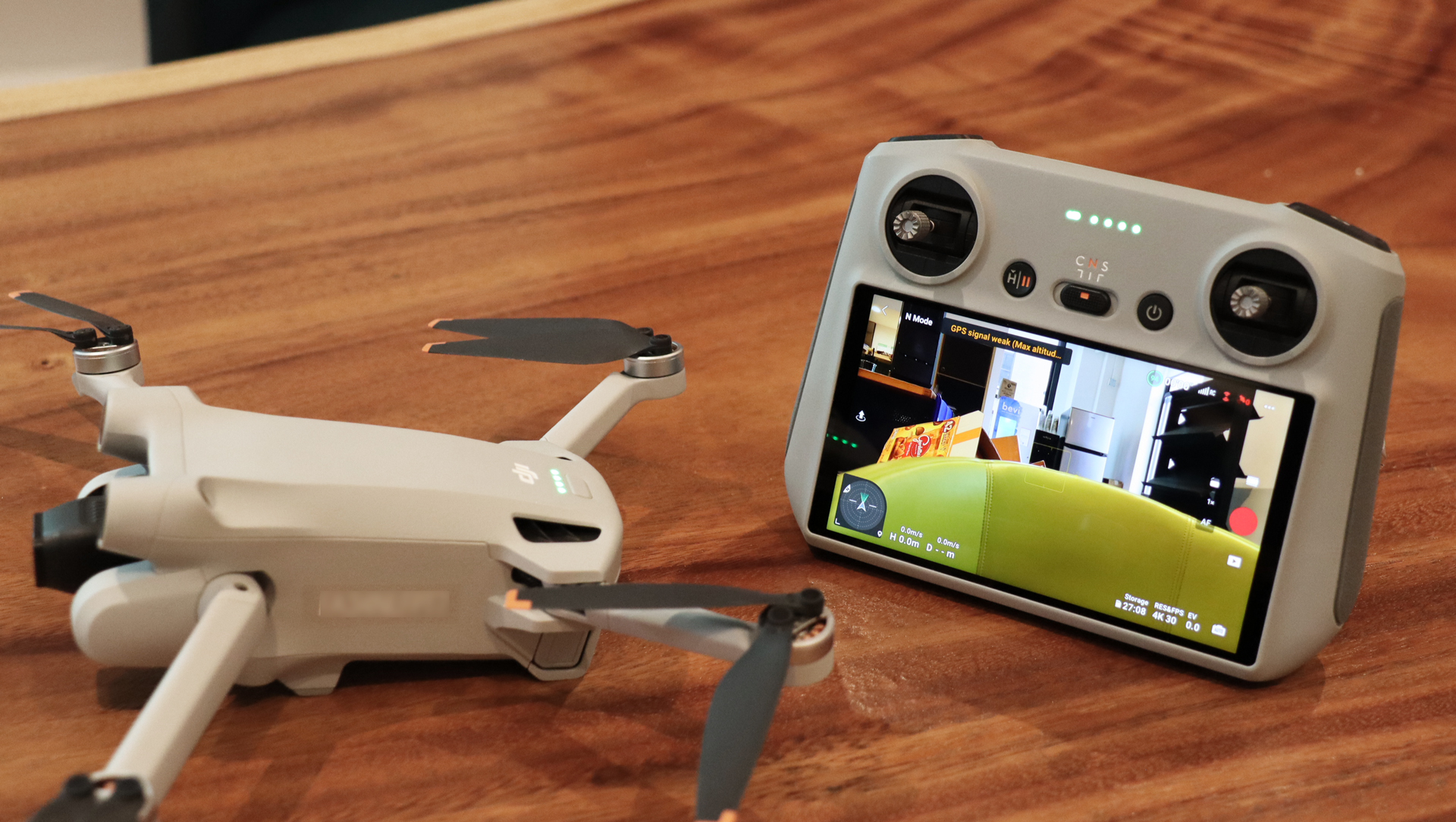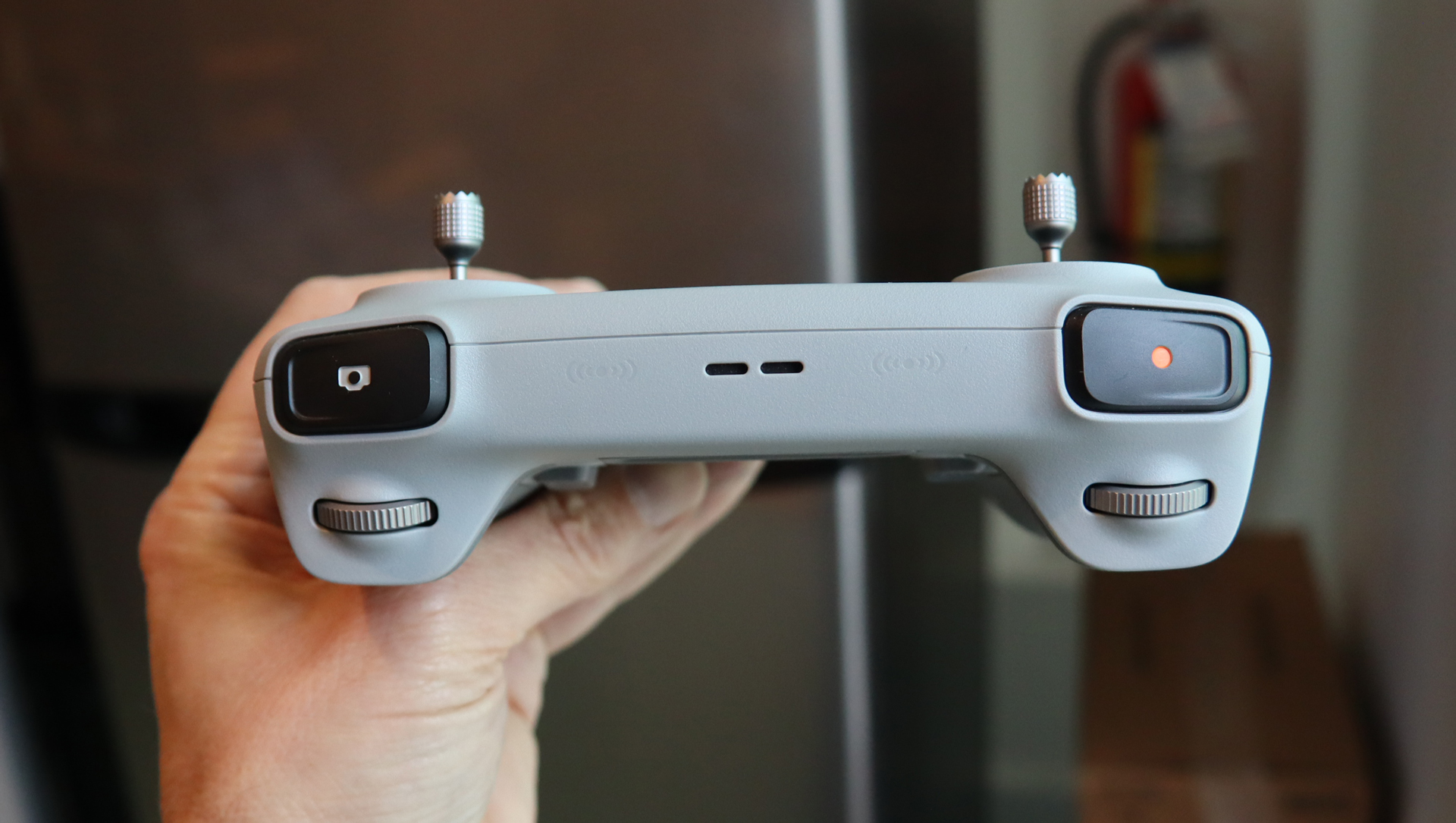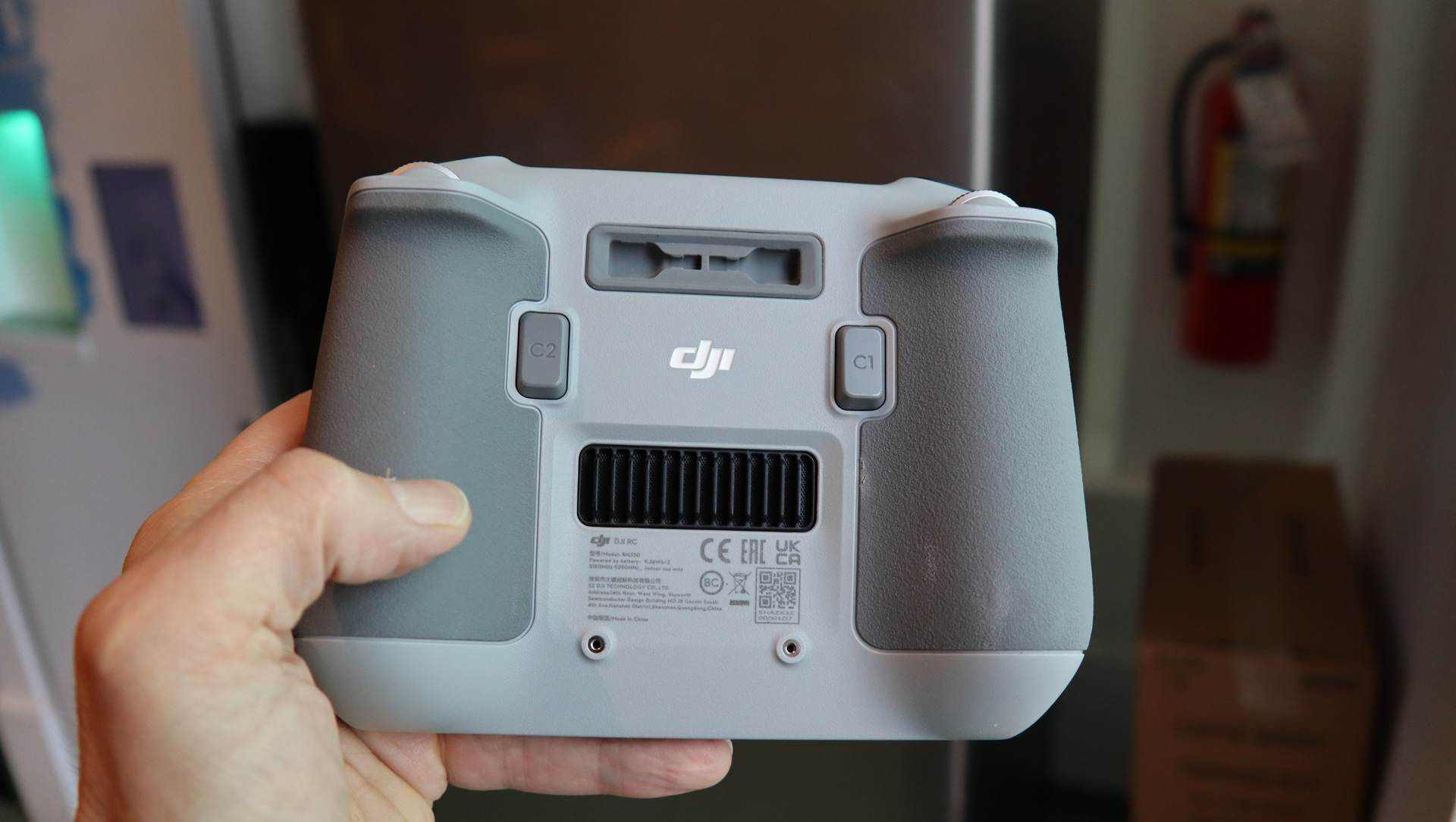The best thing about the DJI Mini 3 Pro might surprise you
A massive remote upgrade

The DJI Mini 3 Pro is a 249-gram wonder of a prosumer drone. It's easily the best mini, foldable drone DJI has ever produced, and yet, my favorite part of the $909 / £859 / $1,299 package is the game-changing DJI RC.
The new remote control incorporates a 5.5-inch high-resolution, full-color display.
Before I tell you why I love this remote so, so much, it's worth explaining that you will pay for the DJI RC. You can order a DJI Mini 3 Pro for $669 / £639 / AU$989, which means you'll get a drone, but no remote (the drone works with DJI's RC-N1, which does not have a screen). If you want the drone and RC-N1, it'll cost you $759 / £709 / AU$1,119. The package you want, in my opinion, is the $909 that includes the new DJI RC.
This isn't DJI's first screened remote. That was the discontinued DJI Smart Controller. At a glance, these two devices are quite similar (same square-ish shape, same 5.5-inch display) but the lines are smoother on the light gray DJI RC and there are no antennas to unfold.

Why the love
To understand why I love this new remote so much, we have to go back to my early days of flying DJI drones. For virtually every one of them, it's been a marriage between my iPhone and the remote. Over the years DJI came up with a variety of ways of securing smartphones of various sizes and running the cable from the remote to the phone's data/powerport.
Because they had to build it as a one-size-fits-all, the marriage is always a bit awkward. Early DJI drone remote controls offered these study arms that you would unfold from the remote body and then press against your phone edges. It looked and felt messy but I never had an iPhone slip out of place. Running the cable on those, though, was a nightmare.
The remote DJI introduced with the DJI Mini 2 (the RC-N1) is a marked improvement. The arms were gone, replaced with a nifty spring-loaded clamp on the top edge of the remote. You just pull it up, drop in the phone and let the tension of the springs pull it back into place on top of the phone. This made running the cable easier, too.
Sign up for breaking news, reviews, opinion, top tech deals, and more.
Even with this remote, though, there were myriad worries: Did I have the latest DJI software installed? As mobile editor and drone newbie Tom Bedford recently noted, DJI has a penchant for launching new apps for different drones. You just have to pay attention to which one you're supposed to install.
Then there are the batteries. Most of DJI's drones actually sip battery life, but I always worried about having enough juice in my iPhone. My fear was that if my screen when dark, I'd lose track of the drone.
A better way

You can guess the obvious and significant benefit of the DJI RC: No iPhone or smartphone of any kind.
I don't have to connect the remote to Wi-Fi (unless I want to), find an app, or wrestle the cables and smartphone into place. If I forgot my iPhone, I could still fly the DJI Mini 3 Pro.
This is freedom.
This is ease-of-use.
This is fun.
None of this would be true if DJI hadn't built a stellar drone remote control. While heavier than previous remotes (and the ultra-light DJI Mini 3 Pro), the DJI RC is a pleasure to hold. The knurled metal joysticks (which you pop out of the back and screw into the front) are perfectly positioned just above the screen, which is smart placement because my fingers never covered the display.
On the front are a set of easy-to-reach controls for quickly snapping a photo or starting or stopping video recording. Right below are dials (one on each side). One lets you control the orientation of the gimbal camera, and the other lets you digitally zoom in on the live image the drone is transmitting to the remote.
There are also a pair of buttons for quick access to things like reorienting the camera forward or straight down, plus access to some of the other advanced camera settings (there are also customizable).
Between the joysticks are buttons for return to home and pause, power, and a slider for flight mode. It's a simple, yet sensible layout.
Even though there are no visible antennas on the DJI RC remote, it maintained perfect communication with the drone as it flew 400 ft above me and then more than a mile away.

The 5.5-inch LCD screen is bright enough for direct viewing, but my son noticed that he couldn't see what was going on even though he was standing next to me. Not a problem for pilots, but it's not a screen designed for group viewing,
The screen, which is also touch-sensitive, doesn't ask you to do much as the remote automatically connects to the DJI Mini 3 Pro. Once that's done, I just had to hit "Go Fly" to get into the controls and see through the drone's 4K camera.
I touch the screen to launch it and can swipe to access various controls.
I could also, by swiping twice from the top of the display, see what appears to be Android underpinnings. It's in these settings that I entered my DJI account information and added Wi-Fi connectivity so I could download the latest firmware directly to the remote and to the drone.
I would expect that battery life wouldn't be as good with a full-sized screen to support, but it's easily outlasting multiple 30-minute flights.
If there is one caveat here, it would be that the lack of a direct connection to a smartphone limits your media downloading capabilities. I can play photos and videos shot on the DJI Mini 3 Pro directly from the drone's microSD card to the RC display. I can also download photos through the DJI RC, but not the videos. If I had a phone attached, I could download everything.
Yes, the DJI Mini 3 Pro is one of the best drones you can buy and one that I absolutely loved flying, but I have to say that the experience might not have been as good without the DJI RC.

A 38-year industry veteran and award-winning journalist, Lance has covered technology since PCs were the size of suitcases and “on line” meant “waiting.” He’s a former Lifewire Editor-in-Chief, Mashable Editor-in-Chief, and, before that, Editor in Chief of PCMag.com and Senior Vice President of Content for Ziff Davis, Inc. He also wrote a popular, weekly tech column for Medium called The Upgrade.
Lance Ulanoff makes frequent appearances on national, international, and local news programs including Live with Kelly and Mark, the Today Show, Good Morning America, CNBC, CNN, and the BBC.